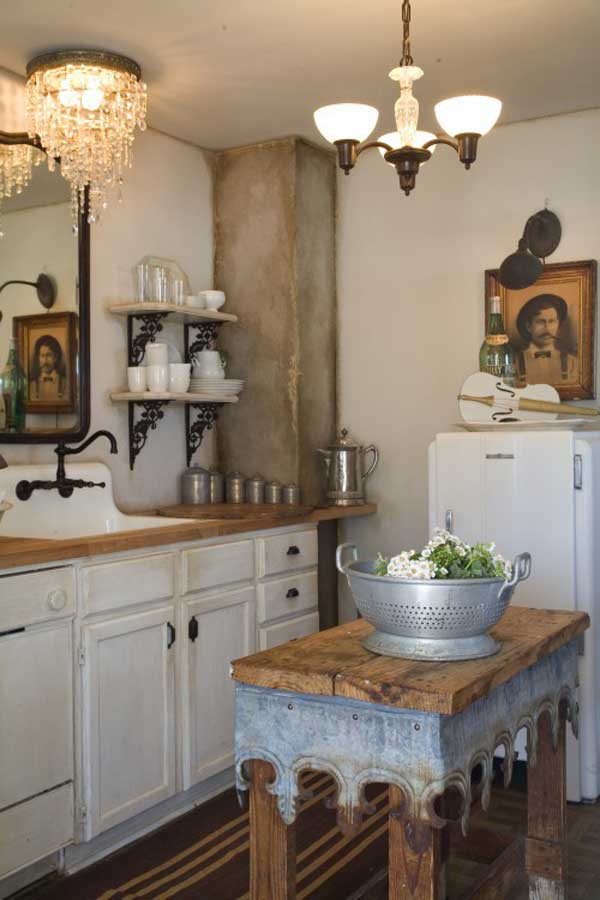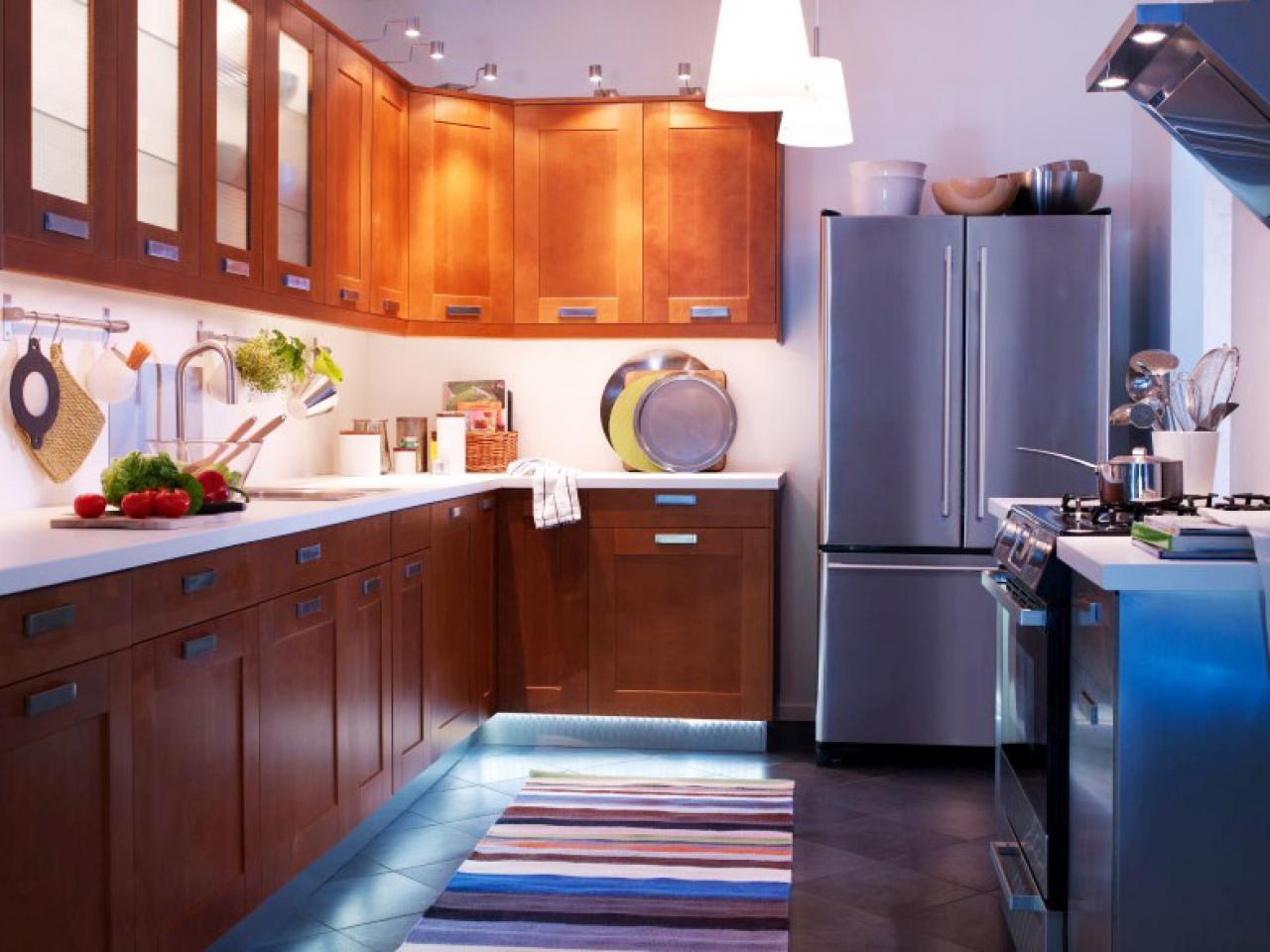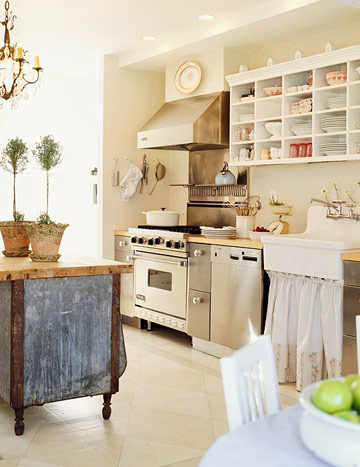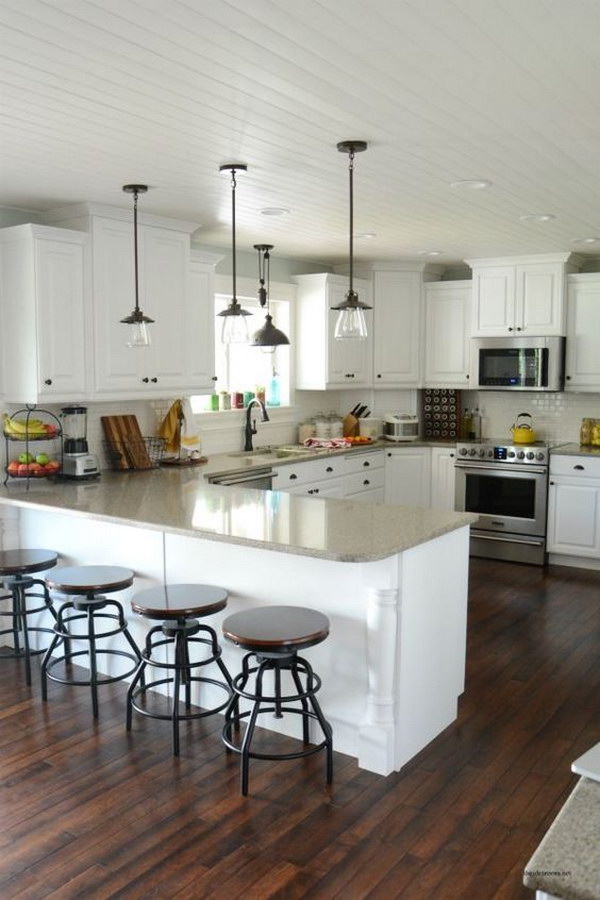A vintage kitchen island is an enduring centerpiece that brings charm, history, and functionality to the kitchen space. Unlike modern, sleek designs, vintage islands carry a sense of nostalgia and craftsmanship that reflects styles from past eras, be it farmhouse, Victorian, mid-century, or industrial. The appeal of a vintage kitchen island lies in its versatility, as it can serve as a cooking station, prep area, or casual dining spot while adding a touch of warmth and character to the kitchen.
They are usually crafted from high-quality, solid materials like wood, metal, or stone, which are not only durable but also age gracefully, adding a lived-in, inviting atmosphere to the space. Whether you’re restoring an old piece or acquiring a new one styled to look vintage, a vintage kitchen island makes a statement, creating an elegant focal point for family gatherings and culinary activities alike.

Vintage kitchen islands come in a variety of styles, each carrying unique features that reflect their historical inspiration. For instance, the farmhouse-style kitchen island is characterized by its rustic charm, typically featuring wooden elements, open shelving, and a distressed finish. This style fits well with casual, cozy kitchens, offering both beauty and storage. Victorian-inspired islands, on the other hand, often have ornate detailing, darker woods, and elegant molding that bring sophistication to the kitchen.
Industrial-style islands with reclaimed metal and wood bring an urban feel, while mid-century designs with clean lines and tapered legs offer a simpler, minimalist look. Each style allows homeowners to choose a piece that resonates with their aesthetic preferences while also aligning with the functionality of their kitchen.

One of the biggest benefits of incorporating a vintage kitchen island is its versatility in terms of materials and finishes. Wood is a common choice for vintage islands, providing a timeless look that becomes richer with age. Reclaimed wood, in particular, adds a unique character since each piece has its history, imperfections, and patina. Metal, often seen in industrial-inspired islands, is durable and offers a unique blend of rustic and modern appeal.
Combining these materials is also common, like adding a wooden countertop to a metal base, creating a balanced look that merges both warmth and structure. Stone, such as marble or granite, is occasionally used on vintage islands to add a luxurious touch, although it can be on the pricier side. These materials not only look beautiful but also have the endurance needed for daily kitchen use.

A vintage kitchen island can be an asset for storage, especially if the kitchen itself lacks ample cabinetry. Many vintage-inspired designs incorporate open shelving, drawers, and cabinets that can store kitchen essentials like pots, pans, and utensils. Open shelving is particularly useful for quick access to frequently used items and can add visual interest when styled with vintage jars, cookbooks, or dishes. Drawers with unique handles or pulls can store smaller items, while deep cabinets can accommodate larger kitchen equipment. The storage possibilities vary depending on the island’s design, but this added utility is a huge benefit, making a vintage island not just an aesthetic piece but also a highly functional one.
An essential aspect of a vintage kitchen island is its role as a gathering space. Historically, kitchens have served as more than just cooking spaces—they are the heart of the home where people gather, share meals, and connect. A vintage kitchen island encourages this by providing a welcoming, central place for family and friends to sit, chat, and eat. Many vintage designs include overhangs that allow for bar stools or seating, making it easy for guests to relax while the cook is preparing a meal. The island can also double as a casual dining spot, ideal for quick breakfasts, family dinners, or weekend brunches. This multifunctional use is one of the many reasons vintage kitchen islands have timeless appeal in a modern setting.
Lighting plays a significant role in highlighting the beauty of a vintage kitchen island. Pendant lights, particularly those with antique finishes or Edison bulbs, are an excellent complement to vintage islands, as they enhance the overall ambiance and draw attention to the island’s features. When placed above the island, pendant lights provide functional illumination for tasks while adding an element of design cohesion. In kitchens with a vintage or eclectic theme, wrought iron or brass lighting fixtures can add to the island’s charm, while a simple, sleek pendant style can balance the island’s rustic elements, creating a more blended aesthetic.

Customizing a vintage kitchen island is another exciting possibility, allowing you to adapt the piece to fit your specific kitchen needs and personal taste. For example, you could add a custom butcher block top for cutting and chopping, or integrate a small wine rack or towel holder for added convenience. Many vintage islands come with wheels, making them mobile and adaptable to different needs. You could also refinish or repaint a vintage island in colors that match or contrast with the kitchen’s palette, allowing it to stand out as a unique piece. By adding these small personal touches, a vintage island becomes more than just a functional item; it becomes an expression of your personality and style.
Although vintage islands add a charming element to any kitchen, it’s essential to be mindful of space considerations. Vintage kitchen islands tend to be larger and bulkier than their modern counterparts, which can dominate smaller kitchens if not carefully planned. The scale and proportion of the island should align with the kitchen’s layout to allow for easy movement and accessibility. Designers often suggest at least 36 inches of space around the island to ensure smooth traffic flow. In smaller kitchens, opting for a compact vintage island or one with open shelving can give the appearance of more space while still offering the benefits of a vintage design.
Another feature of vintage kitchen islands that appeals to many homeowners is their environmental impact. By repurposing or refurbishing old furniture, vintage islands support sustainable design principles, reducing waste and the need for new materials. Reclaimed wood and metal pieces are particularly eco-friendly, and they add a sense of history and craftsmanship that new, mass-produced furniture often lacks. The eco-conscious appeal of vintage kitchen islands can also be a selling point for homeowners looking to integrate sustainability into their homes, knowing that they are making a choice that’s both stylish and responsible.

The durability of vintage materials is also a notable advantage. While vintage items can show signs of wear, this patina often enhances the character of the piece, giving it an authentic, lived-in look. Quality vintage furniture, especially hardwood pieces, can last for decades, if not generations, with proper care. Minor scratches or blemishes can typically be sanded or polished out, and refinishing is always an option if the piece starts to look too worn. Compared to many modern materials, which may be prone to chipping, fading, or warping, vintage islands are made to withstand daily use while maintaining their appeal.
For those who enjoy DIY projects, creating a vintage kitchen island from salvaged materials can be a rewarding experience. Repurposing an old dresser or workbench, for example, can give it a new life as a unique, customized kitchen island. This approach not only allows for creative freedom but can also be more cost-effective than purchasing a new island. By adding a countertop, casters, or additional shelving, you can transform an older piece of furniture into a practical, stylish island that perfectly fits your kitchen’s needs. This personalized touch can make the piece even more meaningful and help it blend seamlessly into the kitchen.
When adding a vintage kitchen island, it’s important to integrate it with the kitchen’s overall design. A cohesive design can be achieved by incorporating other vintage elements like open shelving, antique hardware, or vintage-inspired appliances, creating a harmonious aesthetic. Mixing vintage and modern elements thoughtfully, such as pairing a vintage island with stainless steel appliances, can also create an eclectic look that feels curated rather than cluttered. The vintage island can act as a bridge between different styles, helping to tie the room together in a cohesive yet unique way.

Another benefit of a vintage kitchen island is the potential to add resale value to your home. Many buyers appreciate unique, high-quality features in kitchens, and a well-chosen vintage island can enhance the appeal of the entire space. Vintage islands, especially those made from reclaimed materials, often convey a sense of luxury and craftsmanship that standard modern kitchen furniture may lack. This can set your home apart in the real estate market and potentially contribute to a higher resale value, especially if your kitchen stands out for its distinct design elements.
The timeless appeal of a vintage kitchen island is another reason why it’s a popular choice. Unlike trendy designs that may fall out of favor over time, vintage styles have a lasting quality that complements various décor schemes and eras. A vintage island’s versatility in fitting both traditional and contemporary spaces allows it to transition through design changes with ease. This timelessness can be a valuable asset in a home, as it ensures that the island will remain a beloved and stylish feature regardless of future design trends.
A vintage kitchen island provides more than just functional value—it tells a story. Each scratch, mark, or dent can reflect years of family gatherings, shared meals, and happy memories. For those who love the idea of a kitchen that feels lived-in and welcoming, a vintage island adds this layer of depth, imbuing the room with a sense of warmth and history. The presence of a vintage piece can make a kitchen feel more intimate, a place where both cooking and connecting happen naturally.

Common Mistakes to Avoid
Neglecting Space Requirements: Vintage islands can be quite large, so ensure there is enough room for movement around it. Always measure accurately and plan for at least 36 inches of space around the island.
Skipping Sealing or Maintenance: Especially with reclaimed wood, sealing is essential to protect against moisture and stains. Reapply as needed to keep the piece in good condition.
Choosing the Wrong Lighting: Mismatched lighting can detract from the island’s beauty. Choose lighting that enhances the vintage style, such as pendant lights with antique finishes.
Not Considering Functionality: While vintage islands are beautiful, make sure they fit your cooking and storage needs. An island that lacks essential features, like countertop space or storage, may end up being less useful.
Overdoing the Vintage Theme: Too many vintage pieces can make the kitchen feel cluttered. Balance it with modern elements for a well-rounded look.
Ignoring Proportions: The island should fit well with the size and style of your kitchen. An oversized island can overwhelm the room, so choose one that complements the kitchen’s scale.

Why should I choose a vintage kitchen island over a modern one?
A vintage kitchen island offers unique character, timeless appeal, and high-quality craftsmanship that modern options may lack. Its historical charm and durability make it a stylish centerpiece that’s both practical and aesthetically appealing, adding depth and warmth to the kitchen.
Can I create a vintage kitchen island myself?
Yes, many people repurpose furniture like old dressers or workbenches into kitchen islands. Adding a countertop, storage features, and refinishing the piece can give it new life. It’s a cost-effective option that also adds a personal touch to your kitchen.
How do I maintain a vintage kitchen island?
Vintage islands, especially those made from reclaimed wood, need regular sealing to protect against moisture and stains. Use gentle cleaners and avoid harsh chemicals to maintain the finish. Periodic maintenance like polishing or refinishing may also be necessary for a lasting look.

What lighting works best with a vintage kitchen island?
Pendant lights with antique finishes, Edison bulbs, or wrought iron fixtures complement a vintage island beautifully. These options provide both style and functionality, enhancing the island’s features while ensuring proper lighting for cooking tasks.
Is a vintage kitchen island suitable for a small kitchen?
It can be, provided you choose a compact design and measure carefully. Some vintage islands are available with open shelving, giving a more airy appearance that suits smaller spaces. Alternatively, a mobile vintage island can add flexibility in tighter areas.
Will a vintage kitchen island fit into a modern kitchen?
Absolutely. Vintage islands bring texture and character that can contrast beautifully with modern elements. Mixing vintage with modern fixtures or stainless steel appliances creates an eclectic look that balances old-world charm with contemporary style.

Awesome Kitchen Lighting Ideas

Related Posts: